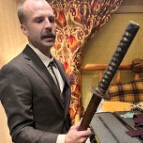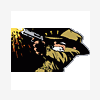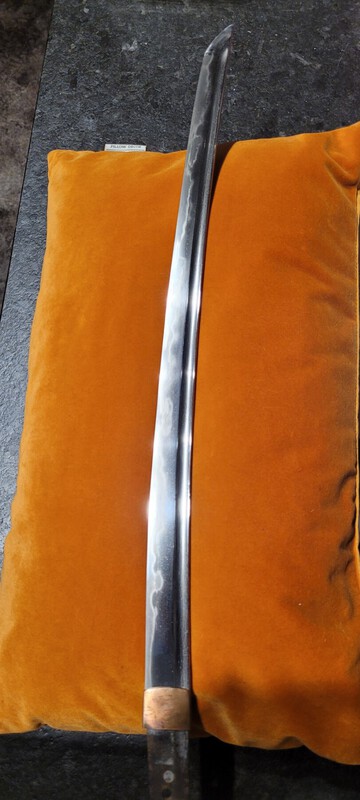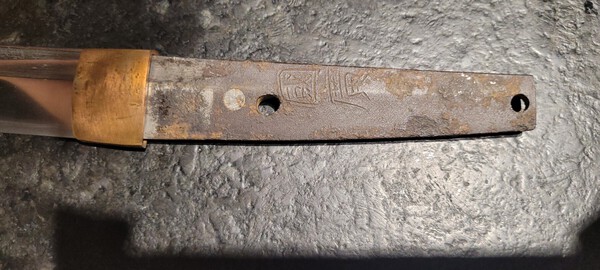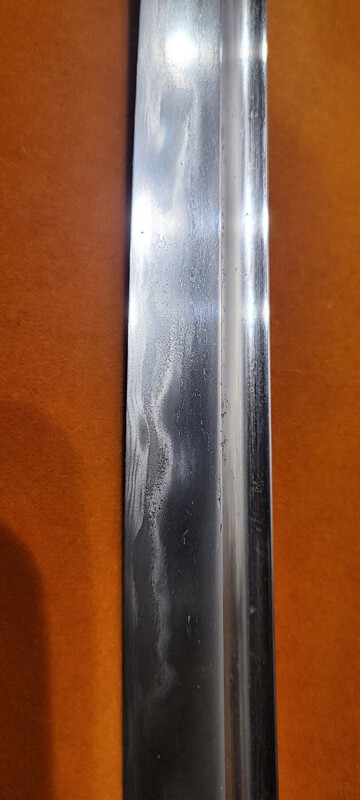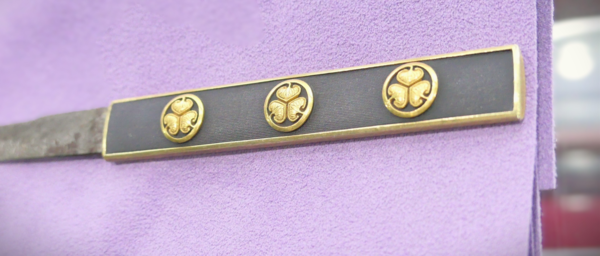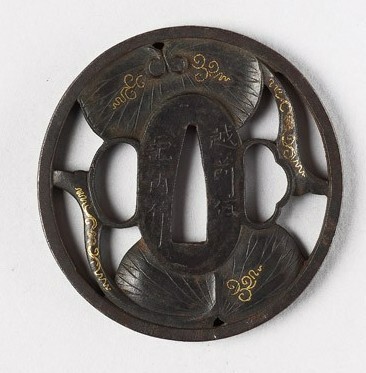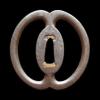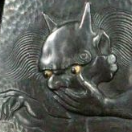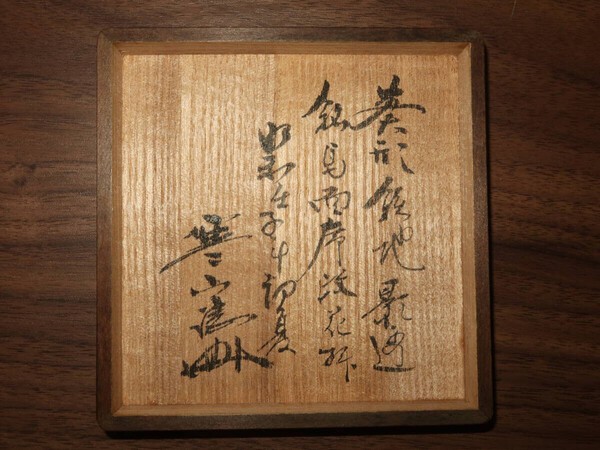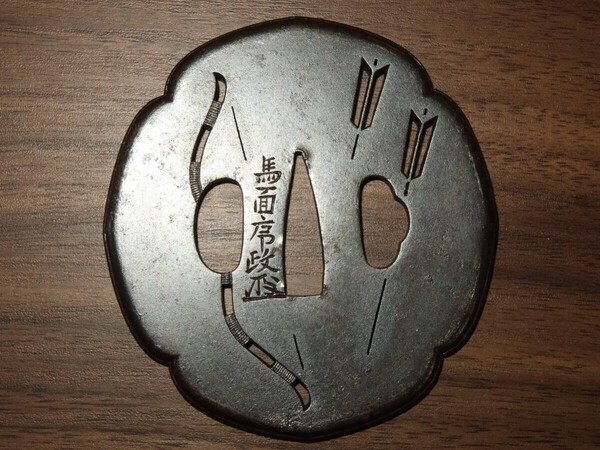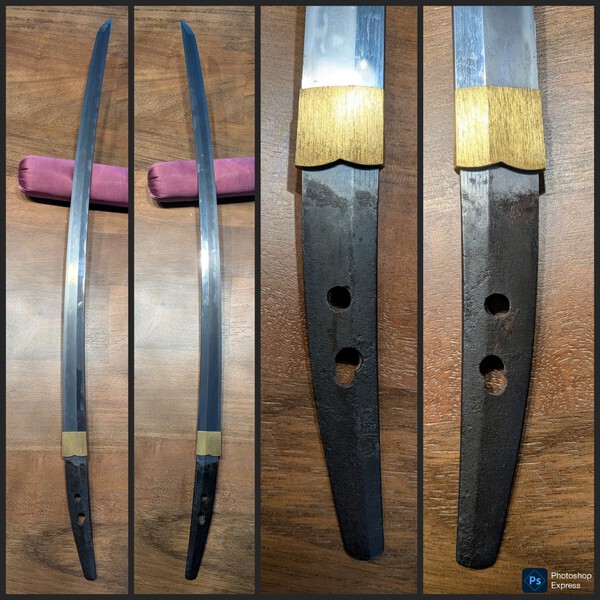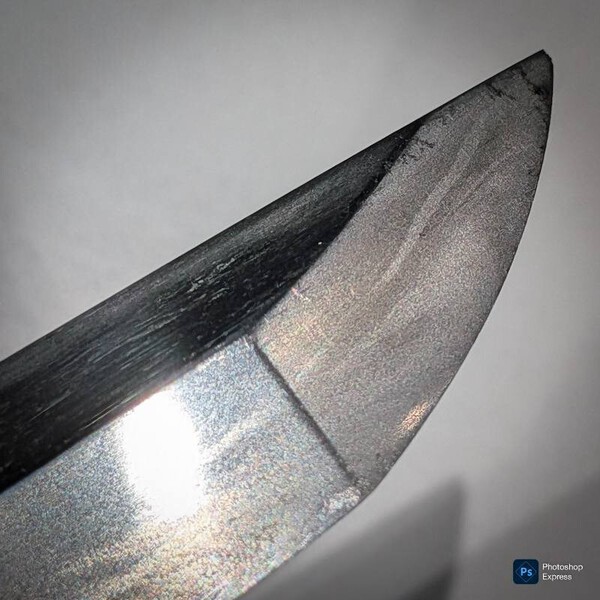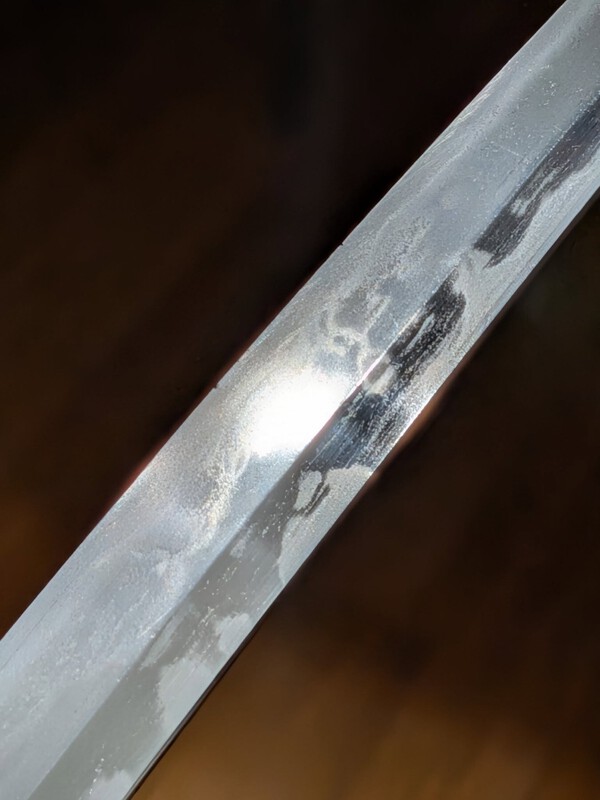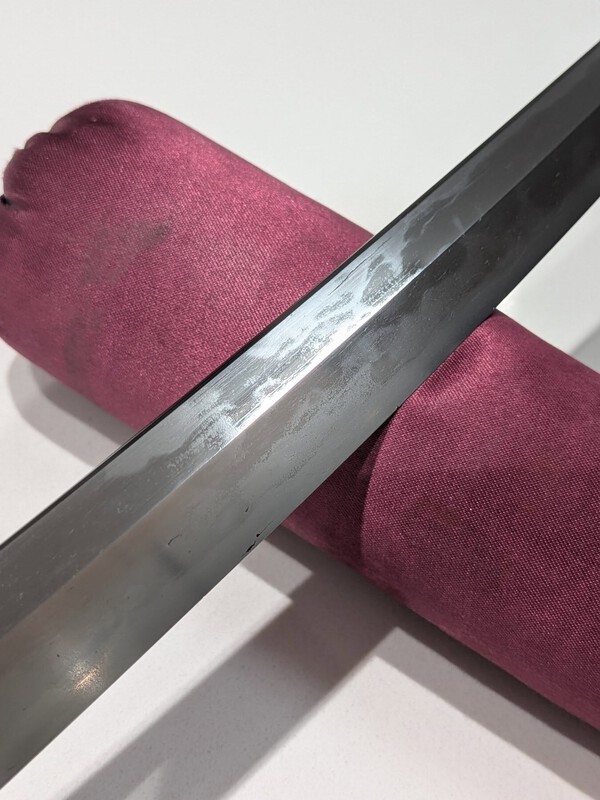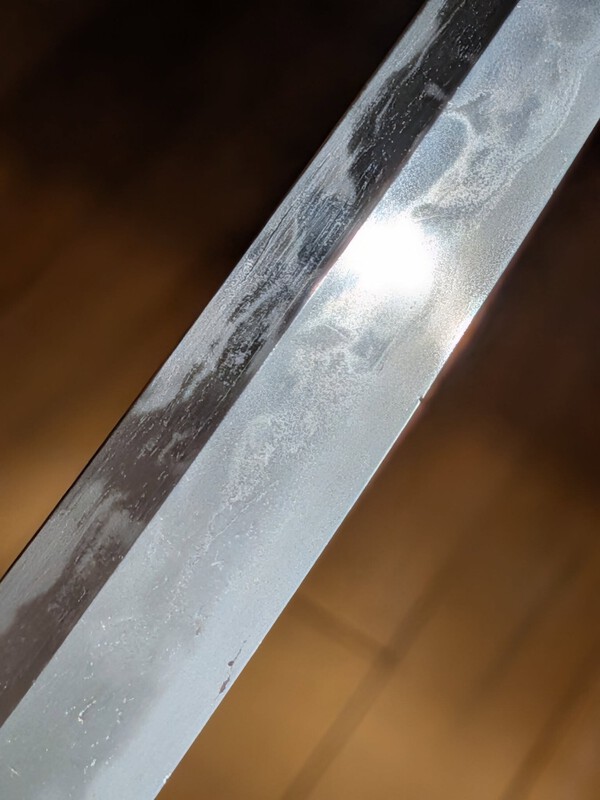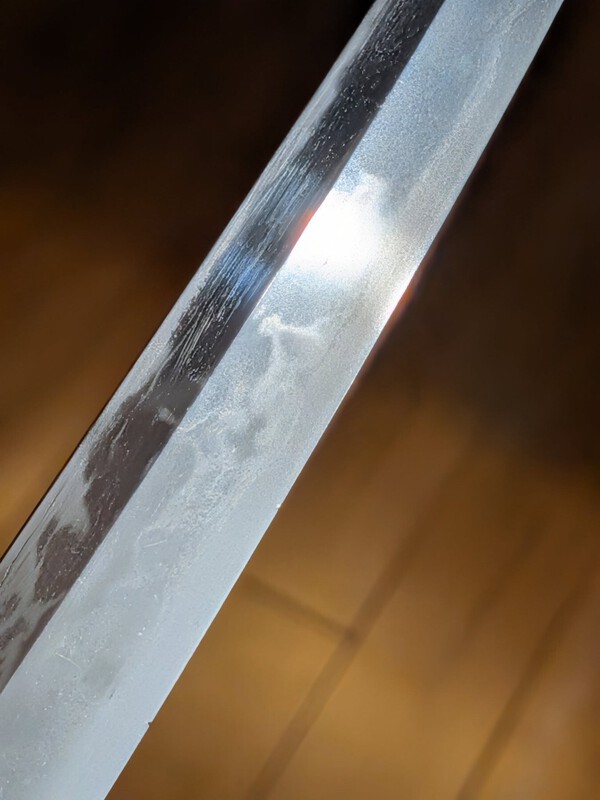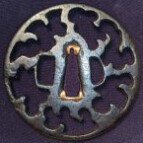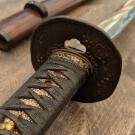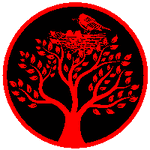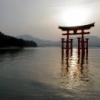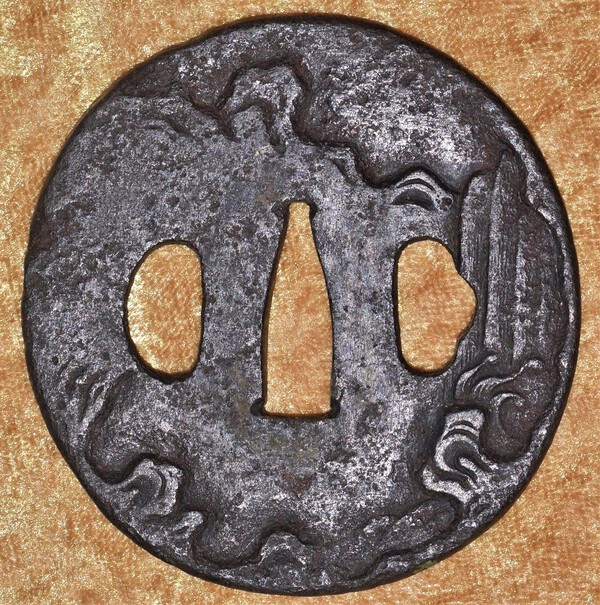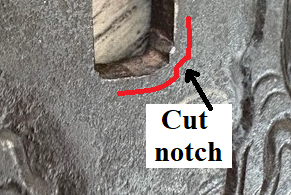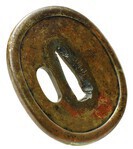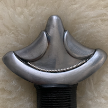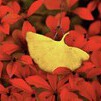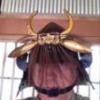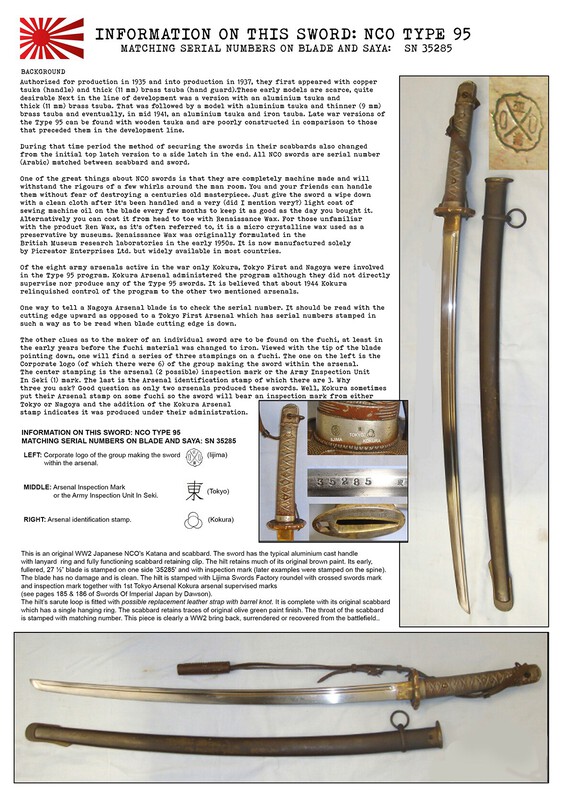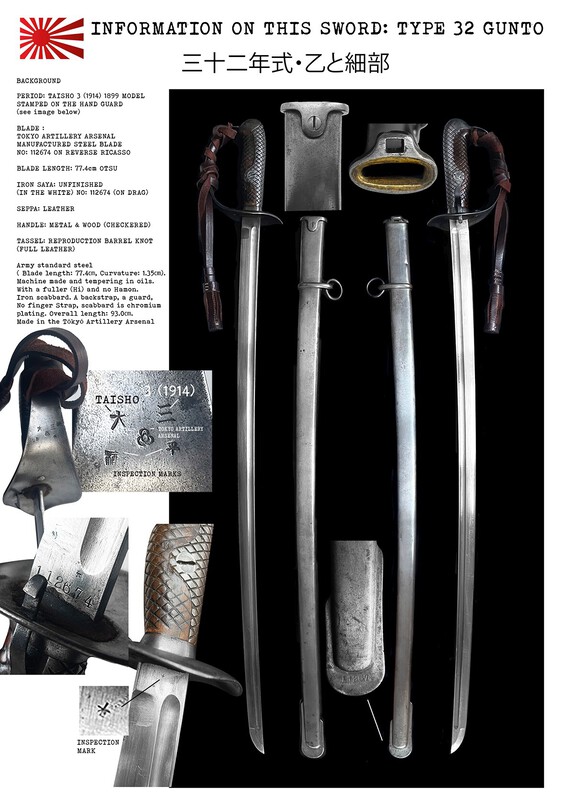Leaderboard
Popular Content
Showing content with the highest reputation since 09/29/2025 in all areas
-
Hi Dee, I know this is ragebait, but it's not healthy for the community and should still be called out. It is profoundly unwise to post such a take on a forum devoted to the preservation and study of Nihonto. * edit admin * I trust you'll get back on your feet and grow a thicker skin. Get better soon, Hoshi9 points
-
One way of looking at it: Top level guys doing fittings for the govt Tokugawa types go to = Goto, individually hand tooled stuff Higher officials needing work appropriate gear go to = Yoshioka shop, good formal. Some minor time saving shortcuts ex: https://www.aoijapan.com/kozuka-kogatana-yoshioka-inabasuke/ Other bureaucrats needing a rig, but a bit more cost go to = Yasuda shop, also pretty good- but maybe more gold plated or lacking in specifics of design. Example: https://www.aoijapan.com/kozuka-mumeiyasuda/ Or ... Fifth Avenue NYC, vs Off Fifth Avenue, vs Filene's Basement / Century 21. All decent, but how bespoke is it? You have Tokugawa mon on the kozuka and kogai. They look very clean yet not too ostentatious in execution. If you look at the nanako, probably it is very uniform and consistently the same size. Yoshioka work is often very clean and strongly uniform elements in the execution. Put another way, they had High quality control. Often unsigned. When they wanted to, they could kick it up a notch or two- so not all Yoshioka work is the same level. Tokugawa mon+ fairly formal with no signs of gold loss + very precise nanako => first guess is Yoshioka.8 points
-
If I were to die unexpectedly (I'm only 36), my collection would be left with my wife. For years now, she has patiently put up with me talking about swords, sword deals, and watched me travel all over the place and meet all sorts of people. I've conveyed to her the people I trust in this field. She will have the option of contacting them, or keeping my swords for herself. I wouldn't have married her if I didn't trust her; and I think i've set her up to make the right choice. Lets hope that day doesn't come anytime soon -Sam8 points
-
Hi Marcus, This is an Oei bizen hamon structure, it was first introduced by Chogi and the Soden-Bizen group. You can tell by the groupings of gunome and choji formations. Specifically, notice how they cluster together in series of peaks, before receding? Another sign is the relative quietness of the ha, it is fully rendered in nioi, and there is not much activity within, this is also quite typical of these Oei blades. The three most representative smiths of this group are known as the "Three Mitsu" (Yasumitsu, Morimitsu, Norimitsu). They stewarded the Osafune school into the turbulent Oei period (1394-1428). It is very difficult to distinguish between them. There exists multiple generations that extend into the beginning of the Muromachi, but on the basis of the conspicuous utsuri, I would place it with the first generation, and Yasumitsu as the most likely candidate. There are other candidates in Oei: Iesuke, Iemori, and Tsuneie. Here is a masterpiece by Chogi ranked Tokubetsu Juyo, where you can see the origins of the hamon of your blade: https://eu.zonerama.com/Nihonto/Album/11057812 The standout midare utsuri is lovely, and indicates that the blade is in good health. Once upon a time, this was likely a proud tachi with a Kamakura-inspired sugata that Yasumitsu was fond of emulating. Best, Hoshi8 points
-
So I got a package a while ago from my dear friend Kazuhiro Hayashi, who as many of you know had recently passed. In the package, a bare blade, no fittings. . He did this from time to time, sending me unusual pieces that he thought I would be Interested in. I like the odd sort of things. Its a Wakizashi with just shy of a 22 inch Nagasa and a deep bohi running the lengh of the blade into the nakago. The sori is about 1/3 inch measured from the Mune machi. It has a very very slight bend but I think that could be sorted by someone who knows how. The polish is not great, but some of the details are visible. Of note, the Hamon is all over the place, which is why I think he sent it to me to begin with. No clear pattern. There is a lot of activity. Big Nie crystals. Lots of sunegashi all up and down the blade. I cant really see much of the hada. It is signed. KUNIHIRO. old style kanji. The nakago does still have some yasuri mei, and there are 3 mekugi ana. one was plugged, one towards the bottom looks recent, and the main looks to be hand punched. I'll post up some pictures and we can all have a discussion about it and what I should do with it next. I'm considering full restoration considering the personal meaning it has.7 points
-
Steven, I’m sure you’ve been told this a million times before, but there is a Military Swords of Japan section on this forum. So why do you keep posting here? I’m tired of seeing your posts in ALL CAPS! You are buying and selling swords(for years...)...Instead of constantly depending on others with zero contribution to this forum, why not try learning on your own first and come to your own conclusions?7 points
-
An important and exceedingly rare Japanese efu tachi made by Imperial Household Artisan Kanenori to commemorate the Ascension to the Throne of Emperor Taisho. This sword is dated August, 1912. Emperior Meiji passed away on July 29, 1912. Yoshihito, his son, ascended to the throne in August 1912. Emperor Yoshihito was later awarded the name Emperor Taisho, 123rd Emperor of Japan. Efu Coronation court tachi were made in very limited numbers–often just 12 were made. Another such example was returned by Russian President Vladimir Putin to Japan in 2016. It was presented to Japanese Prime Minister Shinzo Abe. That sword was made for the ascension to the throne of Emperor Hirohito (Showa). A quick google search will bring up an article about that sword. This sword is signed ‘Teishitsugigeiin Sugawara Kanenori’ (Imperial Court/Household Artisan). The reverse is dated ‘An auspicious day in August, First Year of Taisho Era’ (1912). The nakago is also marked ’83 Okinasaku’–which refers to Kanenori’s age of 83 at the time he made this sword. The koshirae is adorned with the Go-shichi no Kiri (5-7-5) Paulownia crest. The blade nagasa is 63.8 cm. This fine Coronation tachi comes with shirasaya as well. Each piece (tachi and shirasaya) comes in a silk sword bag. CONDITION: This important and exceedingly rare Coronation tachi is in quite perfect condition. This sword was well cared for. SOLD --Matthew Brice StCroixBlades.com7 points
-
Now onto the koshirae... I cant understate how impressed I was, upon seeing it in person- And its left me with a newfound appreciation for Tosogu. I'm really fond of the subject matter; 'Tigers in Bamboo Grove'- a theme that carries on into the design of the Fuchi-Kashira, Koiguchi, Kurigata & Kojiri. As a complete set, it gives a nice sense of continuity to the Koshirae. But for me, the stand-out quality of the Futakoromono was the biggest highlight. Both the Kogai & Kozuka feature a golden trio of Aoi-Kamon, framed by an incredibly fine nanako-work background. Its very much the focal point of the koshirae set, when on display. Again, ill be sure to share photos. Thanks All- hope you enjoy, - Marcus.7 points
-
A quick look at the first two pictures of this tsuba and I expect many of you will jumping up and down shouting ‘Easy! Echizen Kinai tsuba of aoi leaves.’ Just like the one I’ve included for comparison signed Echizen ju Kinai saku. Problem with my tsuba is the it is probably shibuichi and mumei (Kinai were never shy about adding signatures). The tsuba is 7.2 cm x 6.9 cm x 0.4 cm, Weight: 132 g and is essentially a standard Echizen aoi design. The tsuba is almost totally symmetrical about the vertical axis, having two kogai hitsu ana and matching tagane around the nakago ana, making assignment to the omote or ura impossible. The inlay karakusa scrolls are the same, but the raindrops on the leaves differ. So who made it? I have never seen a shibuichi Kinai tsuba, but this does not mean they did not make any. The quality looks above their standard output, so why not sign it? Best explanations I have are that maybe it was made for a high-ranking samurai, by another workshop, who liked to wear a bit of bling on formal occasions but still wear the tsuba design that lesser ranks used, or it was made by a kinko artist as a copy of an iron Kinai tsuba to make a more saleable product for the Western market. Either explanation would explain the lack of wear. Look forward to your comments. John Just a guy making observations, asking questions and trying to learn6 points
-
For those of you who haven't noticed - Ito Mitsuru (well-known Japanese collector which you know for writing the 3 Higo books, Nobuie articles, book on Katanakake,...) has started a blog. This looks like it will be well worth the read. Blog6 points
-
Hi Rebecca! What you have there is a Navy blade made by the Tenshozan sword company in the last days of the war, but mounted in souvenir fittings. Tenshozan contracted with the 8th Army PX (military version of Walmart) to sell over 8,000 of these souvenirs from 1946 to 1950'ish. The painted number - 11402 - tells us the blade was likely made before the war's end, but never used in combat. Many surplus blades were re-fitted for the souvenir contract and sold through the PX in Japan and later in Korea. Value? When honestly sold as souvenirs, they normally run about $450 USD. Navy kaigunto (Navy blades in proper Navy fittings) can go as high as $2,000 plus/minus. You can read about the souvenir operation in this article - The Mysterious NLF Gunto - A Souvenir PS: Could I possibly get a full length photo of the nakago (tang) for my records? I file and track these.6 points
-
My experience is that if someone thinks history ended in 1945, they're on the older side, like me, and actually probably believe that history ended with the end of the Vietnam war. Some younger people I know seem to believe history began when the internet began, and everything was effortlessly online. Everything before that is prehistory . They have a certain point . My nihonto will definitely not be buried with me. I love the idea of gifting them to a younger person who is excited about them, but has limited capital. I have so many amazing things that I've inherited from previous generations - that kind of passing things on is really meaningful to me.6 points
-
I understand your sentiment and am not outraged by it. I will say it sounds a little selfish. Perhaps you could have your executor sell off your swords and use the money to help others, like orphans, victims of abuse, veterans or wildlife. At least some good would come from your collection opposed to dumping historical artifacts to the bottom of the sea. I have a friend sending me his collection to sell and donate the money to St. Judes Hospital for pediatric cancer research. BTW: Once I have them I will post them here if anyone would like to help.6 points
-
You see the elongated mei format from the Hizen smiths, both from the original Tadayoshi school and in the later Hizen (no) kuni gendai group.5 points
-
東海道清水住人、盛重作 – A resident of Tokaido Shimizu, Morishige made. 応好 柳雅堂氏 – Responding to the order from Mr. Yanagi Gado 家運長久 – Good future for the family 昭和六十乙丑年八月日 – Showa 60 Kinoto-Ushi year (1985), 8th month5 points
-
5 points
-
"Japanese aesthetics though are more tricky to understand and are not just "in the eye of the beholder", which is a silly Western concept" I'm curious about this. Could you elaborate? (Jeff) A question to write a book about, but I will try: Japanese swords were not made in a vacuum. The sense for their appreciation and beauty is embedded in a culture long gone and hard to understand even for (modern) Japanese people. Even more so for us Westerners. Usually we tend to enjoy and acclaim features we can easily recognize and understand within the perimeters of our cultural background. An example for this attitude on a very high level: Etchu NORISHIGE is considered a top-swordsmith within Soshu-style of sword-making for good reasons. Western collectors are crazy about his works, for their contrast in jihada and their obvious hataraki are so spectacular. But old Japanese connaisseurs considered his work clearly inferior to MASAMUNE's and SADAMUNE's. Why? Because of its lack of dignity! "What does that suppose to mean: dignity? In 2025 we are living in a world stripped of pride and dignity! Let's make ourselves shine by all means possible." Well, samurai's aesthetics didn't work that way. My advice: Learn the difference between "aki ni sae" and just brightly shining nioi on a hamon. Furthermore study Japan's history and craftsmanship, especially paintings, sculpture, calligraphy and even everyday objects. It is a long way to go, but it is very helpful to understand appreciation of Nihon-To. reinhard5 points
-
5 points
-
Wakizashi Attributed to Sōshū Masahiro, Ōei Era (NBTHK Hozon) Price: $4,500 + shipping This mumei wakizashi has been attributed by the NBTHK to Sōshū Masahiro and is accompanied by a current NBTHK Hozon kanteisho. The blade is from the Ōei period, a time during which the activity of the second and third generations of Masahiro overlapped. While both generations produced work under the same name, the characteristics of this blade align more closely with the nidai. The presence of a vibrant hitatsura with bright nie, ara-nie, tobiyaki, and muneyaki, along with an active jihada, suggests the hand of the second generation more so than the sandai, whose work tends to exhibit a quieter and less nie-laden surface. The blade measures 1 shaku 5 sun 8 bu and is in an older but intact polish, with a few minor stains. The hitatsura is highly expressive, featuring rich nie activity across the ha and ji. Ara-nie forms strong kinsuji and sunagashi in areas, with tobiyaki scattered across the monouchi and muneyaki continuing along the back. The boshi is deeply tempered with nie-kuzure. The jihada is itame with some small ware, and the blade shows possible evidence of historical use, including several kirikomi along the monouchi. The sugata is elegant and in the style of a kodachi. The form of the habaki suggests it was once fitted in a koshirae in the efu-tachi style. Masahiro is considered a direct descendant of Hiromitsu, who in turn transmitted the most technically advanced aspects of the Sōshū tradition after Masamune. Hiromitsu is credited with the perfection of hitatsura. Masahiro’s early work clearly reflects the techniques and aesthetic principles developed under Hiromitsu’s hand. An example of shodai Soshu Masahiro is listed below. https://nihonart.com/portfolio/shodai-soshu-masahiro-ko-wakizashi/ The nidai Masahiro worked through the Meitoku and into the early Ōei period. He is distinguished from the sandai by his liberal use of nie and a more active chōji-midare and gunome-midare structure. In contrast, the sandai’s blades are quieter, occasionally verging toward suguha-based interpretations with reduced nie. This blade, with its dynamic hataraki and exuberant use of nie-deki, is more consistent with the nidai’s approach. The overall construction and shaping of the nakago also supports an earlier attribution within the lineage. MASAHIRO (正広), 1st gen., Jōji (貞治, 1362-1368), Sagami – “Sōshū-jū Masahiro” (相州住正広), “Masahiro” (正広), “Sōshū-jū Masahiro saku” (相州住正広作), first name Kurōjirō (九郎二郎), student of the 1st gen. Sōshū Hiromitsu (広光), he worked in the style of his master whereas his hamon is somewhat smaller dimensioned as that of Hiromitsu, he also adds some togari elements, there are tachi, ko-wakizashi and tantō extant, chūjō-saku MASAHIRO (正広), 2nd gen., Meitoku (明徳, 1390-1394), Sagami – “Sōshū-jū Masahiro” (相州住正広), “Masahiro” (正広), suguha-chō mixed with slightly undulating notare, gunome, ashi, yō, sunagashi and small tobiyaki in nie-deki, higher gunome elements towards the bōshi area can be connected to the kaeri and muneyaki MASAHIRO (正広), 3rd gen., Ōei (応永, 1394-1428), Sagami – “Sagami no Kuni-jūnin Masahiro” (相模国住人 正広), “Sōshū-jū Masahiro” (相州住正広),, “Sōshū-jūnin Masahiro” (相州住人正広), only few blades are extant by him, the jiba is no longer noticeably nie-laden with his generation5 points
-
Nanban or Hizen... not Jakushi (although there's a similar look to the nunome, Jakushi never did this tsuba shape or did this type of design theme). It's probably a Chinese craftsman working in one of the ports in Japan (therefore should get a hybrid combined attribution of both Nanban and Hizen... which never happens in the papering world, because they are fixated on sticking to the narrow set of categories that were agreed upon in the past. Both categories of Nanban and Hizen are loosely defined at best and have lots of issues... so the exact attribution under those two labels is kind of arbitrary anyway. Either way, it's an unusual tsuba so congrats on your first purchase.5 points
-
5 points
-
I like shinto blades though But serious counterpoint, nihonto aren't just weapons - they have both historic and artistic value too. (Limited doesn't mean none?) Imagine what all previous owners of that blade would think of us intentionally destroying them... We can surely do better than that? They say a person dies twice - once with their own body, and then next when the last person that remembers them eventually dies. Make sure that second death is a long time off - go give a blade to some young adult that couldn't dream of affording them, sparking an interest in them for life. This is a forum for the preservation of Japanese swords right? 😅5 points
-
He was not particularly known for bo utsuri, it sort of overall Muromachi trait, somebody copied from some book. Its all hair splitting since they are very similar, but with Oei Morimitsu and alike you don't expect groups of the same height, 4 elements+. You expect large choji-gunome joined with a few others, quite a bit more non-uniform appearance. Strong groupings with flat hight/similar width are associated with Eikyo-Onin-Bunmei pieces. But they very seldom have midare utsuri shooting to shinogi and ashi tend to start closer to the edge, overall hamon can be narrower on average. Sanemitsu did flat height large grouping with very wide and expressive hamon, with some ko nie sprinkled around the hamon's upper portion. Its a good match.5 points
-
Depends how old you are. I’m officially “old” and far closer to the end than the beginning so I have just sold my sword collection and enjoyed it all nearly as much as buying them all. Also I didn’t want to risk losing my marbles so that I became incapable of handling things. Yes I have a gun collection to sort out and I’m about to start that. Of course I agree if you are young it’s different and there is always the proverbial bus that could scupper plans but Nihonto is such a specialist field I think it’s safer to handle the dispersal ourselves…..when we approach the end of the line. I also think the tax implications are often forgotten about if your estate is considerable. Selling stuff before departure means you are only looking at capital gains (or capital losses!) whereas after departing it becomes full inheritance tax liabilities depending on whatever your local taxation requirements are.5 points
-
4 points
-
In order to give you a visual idea what separates a masterpiece from the better-than-average work, I'd like to show you a comparison. One blade is a masterpiece by Osafune Mitsutada made around middle of Kamakura-period. It airs a supreme yet relaxed mastery of forging and tempering in all aspects; dignity as well, if you want. The other blade is a work of Edo Ishido Tsunemitsu from Kambun-era. It is a very well made blade with brightly shining nioi-guchi, utsuri and all traits of a good choji-midare hamon. (The images were made by master-polisher Fujishiro Okisato and show the real nioi-guchi without hadori-finish) One blade I call a masterpiece; the other a very well made blade. Hope this is is helpful. reinhard4 points
-
Okay- teasing you a bit: you want a simple grand formula, then go with E=mc^2 More serious: with each school and each maker, there are _SOFT_ rules about size, shape, finish, and %_percentage of seppa dai vs total volume displacement of the tsuba. The seppa dai size is partially constrained by the surface area displacement of the saya and the tsuka. A tsuba with a seppa dai so much larger than the saya and tsuka face displacement = looks weird and unaesthetic. At least amongst the Higo schools, certain schools and certain generation had specific rules. Thus the seppa dai is a very important kantei point amongst Higo schools. This is also true of Akasaka tsuba. This tsuba has a seppa dai and hitsu ana % that is greater than almost anything seen from 1500 to 1910. It has ratios only seen in tanto tsuba, but it is definitely not a tanto tsuba. The far most likely reason you might end at this sort of ratio is if you are creating a tsuba for display that is not meant to be mounted, free of mounted aesthetics, .....----or is for a massively thick non-Momoyama/Edo saya and tsuka. Therefore: either it is a very eccentric late Edo or Meiji era tsuba, or it is a 20th century work. Those are my thoughts.4 points
-
The initial Type 100s, those made traditionally, were not sold by the arsenals directly but merely inspected. See the quote below by the late Nick Komiya. Deflating another Myth4 points
-
Here the hakogaki (I'm not shure about the date): 葵形鉄地影透 * aoi-gata tetsu-ji kage-sukashi 銘馬面序政花押 * mei Bamen Tsunemasa kaō 昭和壬子年弥生 * Shōwa mizunoe-ne-nen yayoi [March 1972] 寒山誌 * Kanzan shirusu (+kaō) Would you mind to post an image of both sides of the hakogaki? (I'm collecting images from hakogaki by Satō Kanzan)4 points
-
I had a look through the books on this and while I found the smith as signed on the tang there is no new info or any mention of him being RJT. Gendai Toko Kinko Shokukata Soran by Ono 1977 p.70. He was born Yamagata, Sakata, Meiji 38, studied under 1st Gen. Fujita Akiyoshi. He started in swords 1n 1942 and restarted in swords in 19554 points
-
They still keep turning up - I guess they will always be there! https://www.jauce.com/auction/n1202559131 At least you don't have to drop it to tell it was cast! Extraordinarily the description is accurate: "Tsuba with a picture of a tower landscape, by Munenori, cast iron, round, with double hole holes (modern work)" A few touches of gold to increase the "value" Price: 600 € Artist: Soten Period: 18th century https://www.proantic.com/en/1136826-tsuba-in-cut-iron-damascened-with-gold-nunome-zogan-school-of-soten-Japan-edo-18.html4 points
-
made by Naruki Issei (成木一成 ) - mukansa 2009 - he was a very prolific tsuba maker and especially his Owari tsuba were very nice Born on September 10, 1931 (Showa 6) in Nakatsugawa, Gifu Prefecture, as the eldest son of Seiichi Naruki. 1945-1950 (Showa 20-25) He studied ancient ceramics under Fujio Koyama and Toyozo Arakawa. In 1960 (Showa 35), he was unable to move his lower body due to illness and had to abandon his research into ancient ceramics. He was deeply impressed by an iron tsuba his father showed him, and began researching and prototyping. 1963 (Showa 38) He began full-scale production of iron tsuba in Saneto, Nakatsugawa City. 1966-1969 (Showa 41-44) He learned the Kaga inlay technique from Isamu Takahashi. Around 1975 (Showa 50), he began considering creating the base metal for tsuba by blowing iron sand. Prior to that, he experimented with Western iron and collected reclaimed iron from the Edo period, which he then commissioned a swordsmith to roll into sheet form for his tsuba crafts. In 1977 (Showa 52), he held his first solo exhibition, "Tracing the Four Seasons of Mino," at Ginza Matsuya. He expressed the simple yet powerful painting of ancient Mino ceramics on his tsuba. He was awarded the Gifu Prefectural Governor's Award for Outstanding Craftsmanship. In 1978 (Showa 53), he began making tsuba from his own steel. He was awarded the Medal with Dark Blue Ribbon. He held his second collaborative exhibition, "Reproduction of the Tetsuhirumaki Tachi Koshirae," at Ginza Matsuya. In 1981 (Showa 56), he was designated a holder of an intangible cultural property by Nakatsugawa City for his iron tsuba-making techniques. In 1982 (Showa 57), he began performing the entire process, from charcoal making to tatara (smelting) work. From November 1982 to January 1983, he worked daily on the kettle pressing and kept records. He collected iron sand and iron ore from over 50 locations across Japan. In 1983, he held his second solo exhibition, "Making Tsuba with Homemade Steel," featuring homemade steel made from iron sand from various regions. He compared iron made from iron sand and iron ore from various regions across Japan. He also published "Making Tsuba with Homemade Steel." In 1986, he received the Medal with Yellow Ribbon. In 1987, he held his third solo exhibition, "Yagyu Thirty-Six Immortal Poets Tsuba," at the Kuwana City Museum. Yagyu Ren'ya passed away just as 31 original Yagyu tsuba had been produced. The drawings, drawn 20 years later, reveal that the illustrations for the remaining five tsuba are unknown. Naruki, based on the secrets of their names, also produced those five, resulting in a total of 36 pieces on display. In 1998, the "Tsuba: The Keystone of Japanese Swords: Naruki Kazunari and Ishida Tetsuo Exhibition" was held at the Hoshi to Mori no Uta Museum. In 1999, he received his first Grand Prize (Chairman's Award) at the Nittoho New Masterpiece Swords Exhibition. Since then, he has received the award 11 times in a row, and his award has been included in the "Special Exhibition: The Beauty of Tsuba: The Challenge of Tsuba Craftsman Naruki Kazunari." In 2000, he received the Grand Prize (Chairman's Award) at the New Masterpiece Swords Exhibition. In 2001, he received the Grand Prize (Chairman's Award) at the New Masterpiece Swords Exhibition. The "In Pursuit of the Purple Rust-Colored Steel Bark: The World of Naruki Kazunari" exhibition was held at the Hoshi to Mori no Uta Museum. In 2002 (Heisei 14), he received the Grand Prize (Chairman's Award) at the New Masterpiece Sword Exhibition. Held the exhibition "Pursuing the Beauty of Naruki Kazunari's Worldwide Iron Tsuba" at the Gifu Prefectural Museum. In 2003 (Heisei 15), he received the Grand Prize (Chairman's Award) at the New Masterpiece Sword Exhibition. In 2004 (Heisei 16), he received the Grand Prize (Chairman's Award) at the New Masterpiece Sword Exhibition. In 2005 (Heisei 17), he received the Grand Prize (Chairman's Award) at the New Masterpiece Sword Exhibition. In 2006 (Heisei 18), he received the Grand Prize (Chairman's Award) at the New Masterpiece Sword Exhibition. In 2007 (Heisei 19), he received the Grand Prize (Chairman's Award) at the New Masterpiece Sword Exhibition. In 2008 (Heisei 20), he received the Grand Prize (Chairman's Award) at the New Masterpiece Sword Exhibition. In 2009 (Heisei 21), he received the Grand Prize (Chairman's Award) at the New Masterpiece Sword Exhibition. Certified as a non-judgmentalist Since 2010 (Heisei 22), he has entered competitions every year. Since he was non-judgmental, he did not receive any awards. In 2011 (Heisei 23), he was awarded the Gifu Prefecture Traditional Culture Inheritance Award. In 2013 (Heisei 25), he held the exhibition "The Beauty of Tsuba: The Challenge of Tsuba Craftsman Kazunari Naruki" at the Gifu Prefectural Museum. He passed away at the facility in 2022.4 points
-
There very much can be. I know it's said tanto didn't use kawagane and shingane, but there is no doubt that some tanto were made that way, and I have a late koto/early Shinto tanto showing shingtetsu after many polishes. I have zero doubt some smiths did make tanto the same way they made wakizashi and katana. We already had this debate way back: https://www.militaria.co.za/nmb/topic/49145-shintetsu-good-bad-or-acceptable/ http://www.ksky.ne.jp/~sumie99/shingane.html4 points
-
Hi Jay and welcome. I believe it is a typical Shoami school piece, they are relatively common and tend to have a waterfall and mountain scene - with minimal soft metal overlay [nunome] and some inlay. There is a notch at the bottom of the nakago-ana that suggests it has been mounted [but probably only briefly]. I am a little surprised that it is not signed, most are. [not being signed can be a "good" thing - many have fake signatures] Compare it to this one that is cast, the hitsu are rough and not filed smooth the "signature" is crude and to my eyes obviously cast-in [IMHO] Fake signature : 正阿弥包矩 (Shoami-Kanenori) Compare the cast signature to the tachi-mokko one. I strongly believe Jay's piece is hand carved, the cloud swirls on the ura are carved-in not cast. Another selling on ebay - signed and with the characteristic waterfall on one side, rocks on the opposite. Some appear "rushed" and like this one are often neglected [unsigned as well] The Tachi-mokko shaped examples are also common, each have subtle design differences, check this thread: You can also check out this auction site https://www.eldreds.com/auction-lot/iron-shin-no-maru-gata-tsuba-signed-eichizen-kin_6EB3733865 They don't know their stuff, as it is NOT signed Echizen Kinai!4 points
-
Hi Rebecca, the various small parts will have a one or two digit number stamped or written on them. For example, the tsuba (crossguard) will have this number. Take a picture of this number and post it. This number will match to one of the combination of numbers painted on the nakago (tang) of your sword. When time permits, below is a link to an article about postwar souvenir swords that will answer most of your questions. The Mysterious Naval Landing Forces Sword And finally, many thanks for sharing pictures of your sword.4 points
-
The era designations are just tools for kantei, in general swords looked like A in the Koto period and looked like B in the Shinto period. When you do Kantei there is only Koto and Shinto - if you bid on a Shinto smith for a Shinshinto maker they do not say "Wrong period". Of course we like to (need to) break it down further, most of the eras cited are political ones EG Nanbokucho and Muromachi while there are given dates for these periods swordsmiths did not change styles based on a specific date, rather they worked in the style of their teachers and perhaps followed trends seen in the capitals, only changing slowly and if you were out in the country you got the news much later. The time periods are generalizations to help you break down all the tremendous data on makers into digestible bites and think in terms of trends. A smith who was born prior to the Haitorei and who worked primarily in the Shinshinto period is a Shinto smith. Born before the Haitorei but working primarily in the modern era = Gendaito smith. There will always be smiths that overlap these dates, some who are trendsetters and some who only follow the trend later...4 points
-
Most of this is beyond my reading skills, but the characters in the leftmost column in the first and fourth images are a name: 山田耕三郎 (Yamada Kōzaburō, probably this guy).4 points
-
This has been an interesting thread even though some of you seem to like to argue about some really meaningless, silly s**t. Stop wasting time on silliness guys. Having said that, and turning back to a more practical response to the OP, I just turned to my wife and asked the “what if” question, and while she is not ‘helpless’, her pause and uncertain answer made me realize I need to create a more ‘concrete’ plan for her to follow. Lucky for her, I’m a bit anal in my documentation, cataloging, and labeling my modest collections (nihonto, tea ceremony equipment, firearms, etc). What I will be putting together for her are avenues for her to consider when she is ready to part with my things and a ‘tour’ of the stored items and where documentation is located. Of course, if given the opportunity, I will part with my collections on my terms. If not, at least she won’t have to worry about being totally lost.4 points
-
I don't get the notion that it would be a burden to your loved ones to inherit your collection. I love all the weird things my dad and (great?)grandparents collected, even if I didn't get to know some of them. The idea that they thought it worthwhile to get and preserve those things, and I get to wonder why is the closest connection I have to some of my grandparents. I guess the only problem with nihonto is the maintenance, so I guess accompanying the collection with a letter and some obligatory reading would help. Worst case scenario they pawn everything off and have a party, but then at least I tried.4 points
-
There is no defined age cut-off point. When do you stop driving, for example? Everyone is different, though health and advancing years do play an increasing part. Some of the people I know in Japan have been discussing decluttering, and letting go of some of their collections. I know people who have gradually narrowed it down to their two or three favorite blades, wishing then to either pass them on to an interested relative or to donate them to a museum. Personally I am not yet ready to give up driving, but I have found that my general enthusiasm and desire to collect in various fields has gently begun to evaporate. Having said that, if I see something nice...4 points
-
STUNNER sword... I'm sure the tsuba is by one of the YOSHIOKA artisans, an excellent tsuba. Thanks for sharing. BaZZa.4 points
-
4 points
-
I have two sons. Both have stated that upon my demise, the swords will be sold and the money received, split evenly. I like Dee, don't see these as "Spiritual Items", I do see them as Weapons and Art. As much in my mind, I would like them to go to a good home, realistically, unless I manage to move them along before hand, I'll not have a say in the matter.4 points
-
"I often wonder, how much control the smiths had - and, how much is happy accident." When it comes to swords, mastery is defined by control. It is different with tea-cups, for example. Accidental results beyond control during the burning process can enhance the value of a tea-cup. This is not the case with swords. reinhard3 points
-
What also strikes me is they do get signed after they were cast - - so are they "really" cast iron? Are they steel, iron alloy or are they annealed to soften the metal? The mysteries keep croping up. They also appear in museum collections with provenance that they are not recent "modern", most are at least a hundred years old - we don't know [as far as I am aware] where they were made and by whom, it is not as if they have any factory markings on them and you sure can't trust the signatures. Like the whole subject of tsuba and tosogu they keep us intrigued.3 points
-
I have seen shingane in a Kotou tanto with my own eyes... BaZZa.3 points
-
Dear John. Thoughts not answers but..... Matched hitsu in the form for kogai is not a feature of Kinai work generally. The scrolls are stylistically a little removed from typical Kinai work and seem to be honzogan rather than nunome zogan. The seppa dai is rather koban shaped for Kinai work. Oh, and the fact that Kinai examples usually have the design firmly contained within a mimi. There is this one,https://japaneseswordbooksandtsuba.com/store/tsuba-kodogu/t227-amazing-echizen-kinai-tsuba-5th-generation/ Although the design takes us straight to Kinai I would guess that this is one of those cases where design does not equal school. By the way I love it! All the best.3 points
-
Up for sale is a Type 95 NCO and a Type 32 both in original excellent condition TYPE 95 NCO £950 GBP TYPE 32 £650 GBP UK SALES AND DELIVERY ONLY Buyer to pay for shipping PLEASE READ IN DEPTH INFORMATION AND PHOTOS OF THE SWORDS You can also contact me at: dfxstudio@hotmail.com for a quicker response3 points
-
I cannot read the body of the letter either. The address and the name of the addressee are 市内目黒区向原町二五〇 – In Tokyo, Meguro-ku, Mukaiharamachi 250 山田耕三 殿 – Mr. Yamada Kozo3 points
-
As I try to keep track of high level Japanese swords just for my own enjoyment, it is also nice to see that sometimes high end items get donated to various museums and on few occasions also to shrines and other places. To me as a sword enjoyer that is something I adore, as in my travels in Japan I have been able to see several donated items in various museums. Maybe one day I might follow this route too. Of course I understand for sword collectors this might not be seen as wonderful thing as the item is pretty much permanently out of circulation once it lands to a museum.3 points
This leaderboard is set to Johannesburg/GMT+02:00



